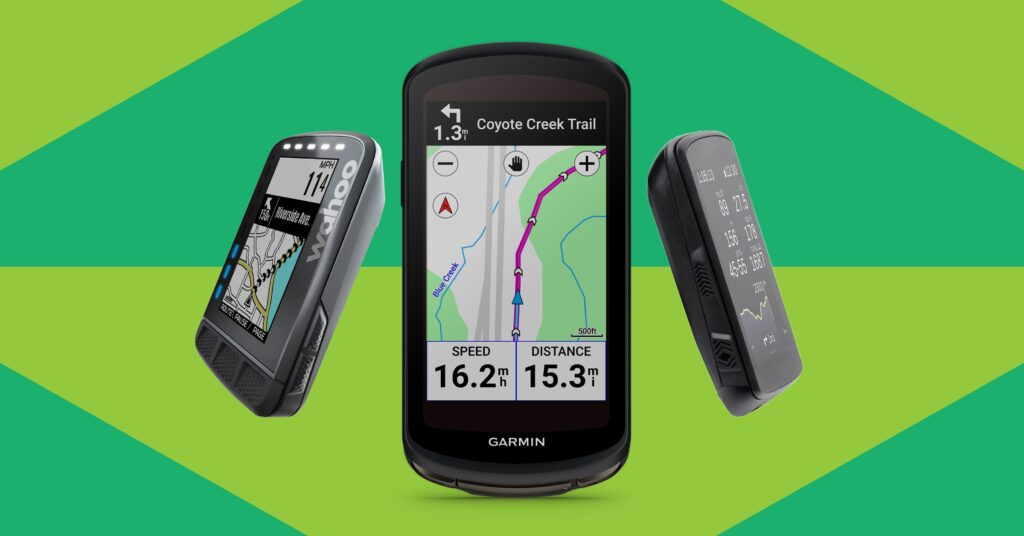The Best Bike Computers (2022): Garmin, Wahoo, Bontrager, Hammerhead
Track your mileage, keep tabs on your heart rate, or map a ride from here to eternity with these handlebar-mounted cycling…


Wahoo offers two solid cycling computers: the $300 Elemnt Bolt, a sleek, small, aerodynamic unit designed for racing; and the larger Elemnt Roam, about the size of a pack of Marlboros, that’s designed for way-finding. The Roam had been on the market for three years when it was updated in October 2022. I’ve been testing this new version.
The newest iteration of the Roam, which looks exactly like its older sibling, offers dual-frequency GPS. The oversimplified explanation: dual frequency allows the GPS unit to operate on two frequency bands instead of one. Single-frequency GPS devices offer accuracy within 15 feet. Dual-frequency GPS devices offer accuracy within centimeters.
Where can this make a difference? Say you’re bikepacking on poorly maintained singletrack through an aspen forest in the Rockies. With single-frequency GPS, objects like towering trees can block or confuse the signal, which can create route inaccuracies, which can get you lost. That might not be a big deal in an urban setting where you can stop at the local coffee shop to ask for directions. But in the wilderness, getting off track by 15 feet might mean making a crucial error.
With the strengthened dual signal, turn-by-turn navigation prompts for all maps of any file types—either preloaded or uploaded via apps like Strava, Komoot, or Ride with GPS—are spot-on accurate. Should you somehow make a wrong turn, there’s a rerouting feature that will quickly get you back on track. If you’re really lost, the “breadcrumb” feature navigates you back to your starting point even if the device is offline.
Also new: “The Summit,” color-coded gradients in the grade data field and elevation chart when riding a third-party route or Strava segment. No wonder that Forest Service mountain road seemed ruthless and endless: You can now see that it had a 13 percent grade.
I liked the Roam’s easy-to-read screen, which uses an ambient light sensor to auto-adjust the LED backlighting. Instead of a touchscreen, there are three bottom buttons that let you scroll between customized screens like the main map, nearby Strava segments to tackle, and the home dashboard. That dashboard includes miles per hour, miles ridden, clock, ride time, heart rate (when paired with a heart rate monitor), revolutions per minute (when paired with a power meter), and average miles per hour. By pushing the button on the lower right, you can zoom in or out on the dashboard, an excellent feature for aging eyes.
Battery life is 17 hours on the newly upgraded Roam, roughly the same as on the old model. That level of stamina pales in comparison to the Garmin 1040 Solar, but the Wahoo is still a solid choice for any endeavor under that time limit. With an expanded 32 GB of memory, there’s more room to save favorite routes, detailed maps of new places, up to five structured workouts from Wahoo, as well as planned workouts from partner apps like TrainerRoad, Training Peaks, and Today’s Plan.
One of my co-testers found the included handlebar clamp too hefty, with the Roam locking into a plastic frame almost as big as the device itself. The computer is unlikely to break or slip out of position while riding, but the extended plastic bracket feels like it could snap in half in a crash.




